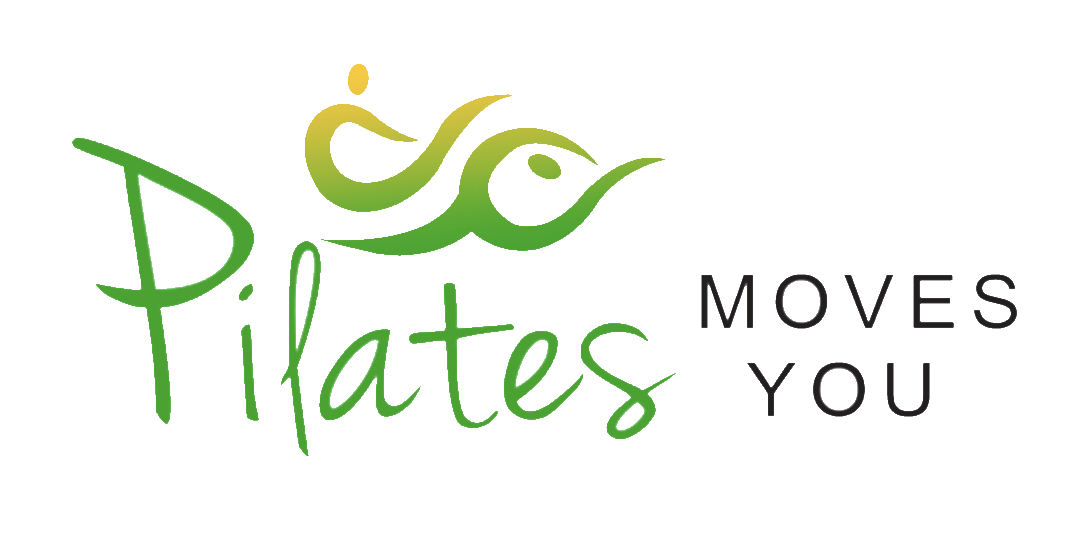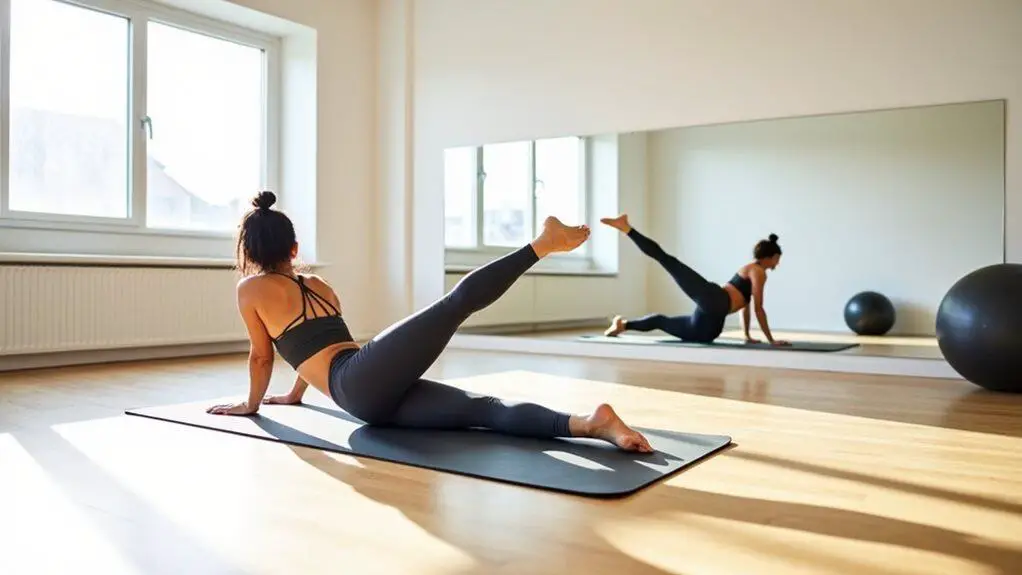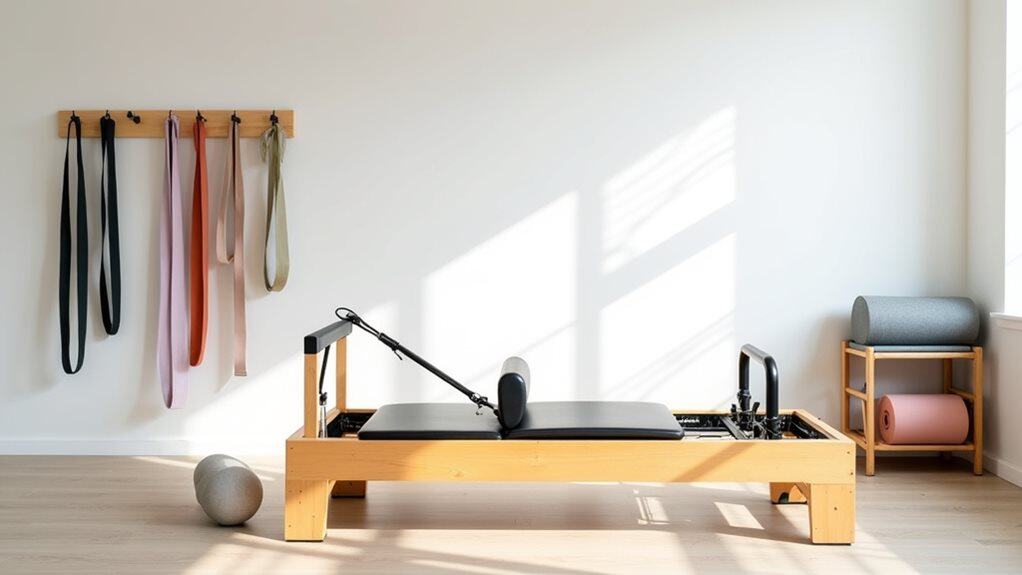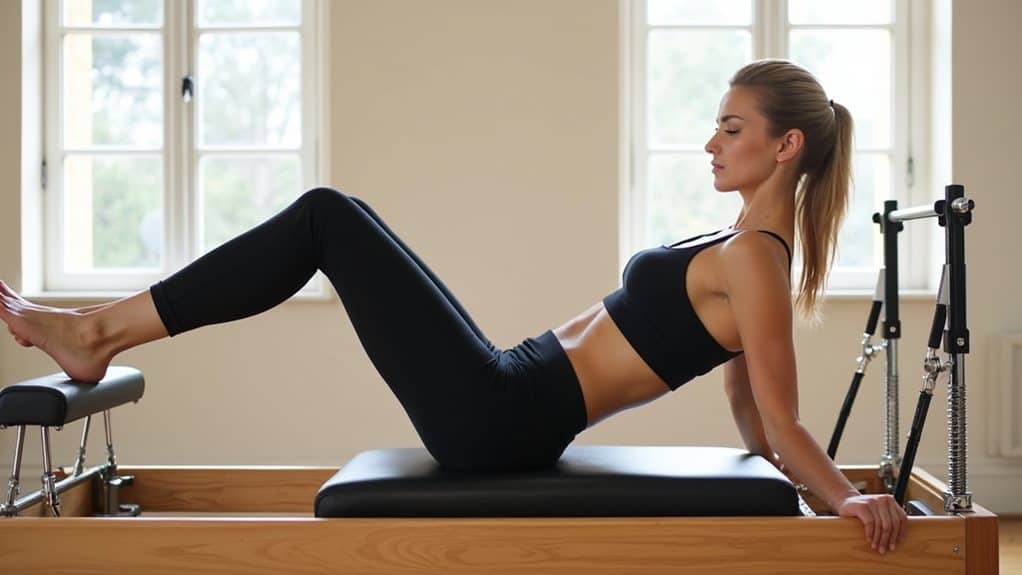Have you ever wondered if the Pilates Reformer can help you build muscle? Does this popular exercise equipment have the power to transform your body and give you stronger, more toned muscles?
The Pilates Reformer can help build muscle. The resistance provided by the springs and pulleys on the Reformer helps to strengthen and tone muscles throughout the body. Regular use of the Reformer can lead to increased muscle strength, definition, and overall body toning.
Picture this: you’re on the quest to find the perfect workout routine that will not only keep you fit, but also contribute to building stronger muscles. With countless fitness regimens to choose from, it’s easy to feel overwhelmed.
Enter the Pilates Reformer – a sleek workout machine that you may have come across at your gym or perhaps even stumbled upon on your social media feed.
This impressive-looking contraption, boasting straps, springs, and a gliding carriage, promises a full-body, high-intensity workout.
But the real question is, does the Pilates Reformer truly deliver on its promise to build muscle? If you’ve ever been curious about this workout marvel, buckle up as we dive into the world of Pilates Reformer and explore its potential to redefine and strengthen your muscles like never before.
Introduction to Pilates Reformer and Muscle Building
The Pilates Reformer is a versatile bit of kit that has gained immense popularity in recent years, particularly among women who are looking for an effective way to improve their fitness levels and overall health.
It was over a century ago when Joseph Pilates introduced this low-impact workout, which greatly benefits individuals by enhancing their flexibility, muscle tone, stamina, and range of motion. However, a common question that arises is whether Pilates Reformer can help build muscle.
The answer is yes; a Pilates Reformer can indeed aid in muscle building. This bed-like flat platform with a movable carriage allows for a more intense workout compared to traditional mat Pilates, targeting specific muscle groups like the core, hips, shoulders, and pelvis.
When performed consistently and combined with cardiovascular exercise, Pilates Reformer can lead to visible muscle growth and increased strength.
While Pilates may not be the go-to choice for those seeking to build large muscles, such as in the quadriceps, back, or chest area, it serves as a valuable addition to any fitness routine.
The workout aids in alleviating chronic lower back pain, improving posture, and enhancing one’s ability to focus. Incorporating Pilates Reformer into one’s regimen can positively impact one’s quality of life and provide numerous health benefits.
Pilates Reformer vs. Weight Training for Muscle Building
When comparing Pilates Reformer workouts and weight training for muscle building, it is essential to understand the difference in techniques and goals. Pilates Reformer focuses on slow, controlled movements to improve overall flexibility, mobility, and core strength. In contrast, weight training aims to build muscle mass and enhance overall physical strength through resistance exercises.
While both methods can contribute to a toned appearance, weight training is generally more effective for building muscle mass.
However, Pilates Reformer workouts are excellent for increasing core strength and stabilization throughout various ranges of motion, which can protect against injury and improve overall functionality.
For individuals looking to build muscle, weight training is the preferred method, but incorporating Pilates Reformer exercises into the routine can provide valuable benefits such as increased flexibility, improved posture, and better muscular balance.
Ultimately, the choice between Pilates Reformer and weight training depends on each individual’s fitness goals. Combining both forms of exercise can create a well-rounded and effective workout regimen that promotes muscle building, functional strength, and overall physical well-being.
Can Reformer Pilates Replace Weight Training?
Although Reformer Pilates can be an effective means of strengthening and toning muscles, it may not be the best replacement for weight training, depending on an individual’s fitness goals.
If the objective of weight training is to strengthen and stabilize muscles, then incorporating Reformer Pilates into one’s workout regimen may be beneficial.
Exercises such as the frog and leg circles focus on lengthening and strengthening muscles simultaneously, improving core strength, balance, and overall range of motion.
However, for individuals looking to build bulky muscles or gain a significant amount of weight, Reformer Pilates may not yield the desired results.
Training with a Reformer primarily focuses on working the entire body while engaging the core, which contrasts with weight lifting exercises that often isolate specific muscle groups.
Furthermore, breathing techniques play an essential role in Reformer Pilates, whereas they may not be as crucial in traditional weight training.
In conclusion, Reformer Pilates can complement weight training programs but may not serve as a complete replacement for those seeking to build large, bulky muscles. It caters more towards individuals who aim to achieve a lean, toned physique and improved overall strength.
Can Reformer Pilates Build Strong, Toned Muscles?
Reformer Pilates has gained significant popularity in recent years, especially among women. This low-impact workout offers numerous health benefits, including increased stamina, improved range of motion and posture, enhanced flexibility, and muscle toning. But can Reformer Pilates help build strong, toned muscles? The answer is yes!
Using a bed-like flat platform attached to a frame with wheels, the Pilates reformer enables a more intense workout experience. The platform, also known as the carriage, moves back and forth and is connected to the reformer via adjustable springs, providing varying resistance when pushing or pulling. This added resistance helps target specific muscle groups, aiding in muscle building.
To maximize the benefits of Reformer Pilates, it is important to incorporate cardiovascular exercises, like running, into your routine. This form of exercise not only strengthens muscles but also helps alleviate chronic lower back pain, reduce the risk of injury, and enhance overall body coordination.
Some of the key muscles targeted during Reformer Pilates include the midsection’s deep intrinsic muscles, the ‘under butt’ area, iliopsoas for side-to-side flexibility, and both internal and external obliques. With consistent practice, Reformer Pilates can help you build strong, toned muscles, enhance overall wellbeing, and improve your daily routines.
How Does Reformer Pilates Impact Different Muscles in the Body?
Reformer Pilates is known for offering a full-body workout that targets various muscle groups, ultimately leading to a toned, strong physique. Here are the main areas and muscles that Reformer Pilates targets:
- Core Muscles: Reformer Pilates exercises target the core muscles, including the transverse abdominis and multifidus, which help stabilize the spine, pelvis, and core. Strengthening these muscles improves control and stability during exercises and everyday tasks.
- Gluteal muscles: Exercises such as squats, lunges, dips, curls, and bridges are included in Reformer Pilates workouts to target and strengthen the glute muscles, including the glute max, hamstrings, and glute med.
- Iliopsoas: The iliopsoas muscles connect the lower spine, hip, and front of the thigh, allowing for side-to-side bending and spine flexing. Reformer Pilates has shown to be especially effective in strengthening these muscles, as they are difficult to target with other exercises.
- Obliques: Reformer Pilates targets both sets of oblique muscles, the internal and external obliques, resulting in chiseled abdominal muscles. These exercises complement static side planks and bicycle crunches often found in traditional Pilates workouts.
- Overall flexibility: Lastly, Reformer Pilates helps improve your flexibility by targeting different muscle groups that support a wide range of motion, reducing the risk of injury and promoting healthier movement patterns.
In conclusion, Reformer Pilates provides a dynamic and effective full-body workout that strengthens and tones various muscle groups, leading to improved flexibility, stability, and overall fitness.
What is the average time it takes to see muscle gain with a Pilates Reformer?
Building toned and stronger muscles with a Pilates Reformer can be a rewarding process, but the time it takes to see noticeable results may vary depending on several factors. These include an individual’s fitness level, workout frequency, and consistency in performing Pilates Reformer exercises. Generally, it is recommended to attend at least two to three sessions per week to see improvements in muscle strength and tone within a few weeks.
For beginners, initial benefits such as better posture, increased flexibility, and improved core strength may be observed within the first few weeks of consistent practice. As the body becomes more familiar with the exercises and proper form is achieved, the focus shifts to deepening and refining the movements. This is when muscle toning and strengthening may become more apparent, usually within three to six months of dedicated practice.
It is essential to remember that every individual’s progress is unique, and patience and commitment to the process are vital for long-term success. Combining Pilates Reformer workouts with a balanced diet and additional cardiovascular exercises can further optimize muscle development and overall fitness.
Additional Benefits of Reformer Pilates for Muscle Building
In addition to building strong, toned muscles, Reformer Pilates offers several other benefits that contribute to overall fitness and muscle development. First, it enhances core strength and stability, providing a solid foundation for all other exercises and movements. A strong core is essential for proper posture, balance, and efficient muscle performance.
Second, Reformer Pilates promotes flexibility and joint mobility through its unique combination of dynamic stretching and strengthening exercises. This increased flexibility allows for a greater range of motion and reduced risk of injury, which in turn supports more effective muscle building.
Third, the exercise regimen is known for its focus on proper alignment and form. By training the body in correct movement patterns, Reformer Pilates helps develop better body awareness and motor control. This improved body awareness enables you to engage the correct muscles and execute movements more effectively for optimal muscle development.
Fourth, Reformer Pilates is a low-impact form of exercise, making it an excellent option for individuals with joint issues, recovering from injuries, or seeking a gentler workout. The low-impact nature of Reformer Pilates helps prevent excessive strain on muscles and joints while still providing a challenging full-body workout.
In conclusion, Reformer Pilates not only builds strong, toned muscles but also offers numerous additional benefits that contribute to overall fitness, muscle development, and injury prevention.
What muscles can be targeted with a Pilates Reformer?
The Pilates Reformer is an exceptional workout tool that targets various muscle groups, helping promote a strong, toned, and flexible physique. The primary area of focus is the core, comprising the deep intrinsic muscles like the multifidus surrounding the spine and the transverse abdominis, which functions as the body’s natural girdle. Strengthening these stabilizing muscles enables better control of movements in daily routines and exercise regimens.
Furthermore, the Pilates Reformer efficiently targets the glutes, especially the hard-to-reach ‘under butt’ region, which contributes to a rounder and lifted backside. Leg muscles, such as the hamstrings, also benefit from consistent sessions on a Reformer. Other crucial muscles worked include the iliopsoas, connecting the lower spine and hip to the front of the thigh, facilitating side-to-side bending and spinal flexing.
Lastly, both sets of oblique muscles – internal and external – benefit from Reformer Pilates, helping in carving defined abdominal muscles and strengthening the core. Overall, the Pilates Reformer provides a comprehensive, full-body workout for every fitness enthusiast.
Pilates Reformer Exercises for Deep Intrinsic and Stabilizer Muscles
Pilates Reformer is a versatile and dynamic workout method that targets deep intrinsic and stabilizer muscles, aiming to improve posture, flexibility, and overall fitness. The combination of the Reformer’s adjustable resistance and various exercises allows you to work on multiple muscle groups simultaneously, providing a comprehensive and effective workout.
One key benefit of using a Pilates Reformer is its ability to engage your core, helping to strengthen the spinal multifidus and transverse abdominis muscles. By maintaining a consistent practice, these core stabilizer muscles become more developed and provide better support to your spine, pelvis, and overall movement.
Some popular Pilates Reformer exercises that target these deep intrinsic and stabilizer muscles include leg circles, the hundred, and the pelvic curl. These exercises are designed to work on your gluteus maximus, hamstrings, iliopsoas, and oblique muscles, helping to create a well-rounded and balanced workout routine. Moreover, consistent Pilates Reformer sessions may also help to alleviate lower back pain, improve posture, and increase the ability to focus throughout everyday activities.
In conclusion, incorporating Pilates Reformer exercises into your fitness routine can have many benefits, from targeting deep intrinsic and stabilizer muscles to improving overall wellness. As you progress and gain strength, you’ll notice a significant improvement in your posture, balance, flexibility, and muscle tone.
Pilates Reformer Exercises for Glutes, Iliopsoas, and Obliques
If you’re looking to tone and strengthen your glutes, iliopsoas, and obliques, Pilates Reformer exercises can be an excellent addition to your workout routine. These low-impact, resistance-based exercises target specific muscle groups, helping you achieve a more sculpted and balanced physique.
For glutes, try exercises like the Footwork Series, Leg Presses, and Side-Lying Leg Series, which focus on engaging the gluteal muscles through controlled movements on the Reformer. These exercises help lift and tone the glutes, giving you a more rounded and attractive appearance.
To strengthen the iliopsoas muscles, incorporate exercises like the Knee Stretch Series, Hip Rolls, and Leg Circles, which target the front of the thigh, the lower back, and hip area. These exercises improve side-to-side flexibility and spinal stability, providing a solid foundation for other activities and sports.
Finally, to work on your obliques, include exercises like the Twist, the Mermaid, and the Oblique Press in your Pilates Reformer workout. These moves will engage both the internal and external obliques, leading to a more defined and toned waistline.
Incorporating these Pilates Reformer exercises into your fitness routine will help you shape and condition your glutes, iliopsoas, and obliques, leading to improved posture, core strength, and overall muscle tone. Remember to perform these exercises consistently, and ask a certified Pilates instructor for guidance to ensure proper form and prevent injury.




